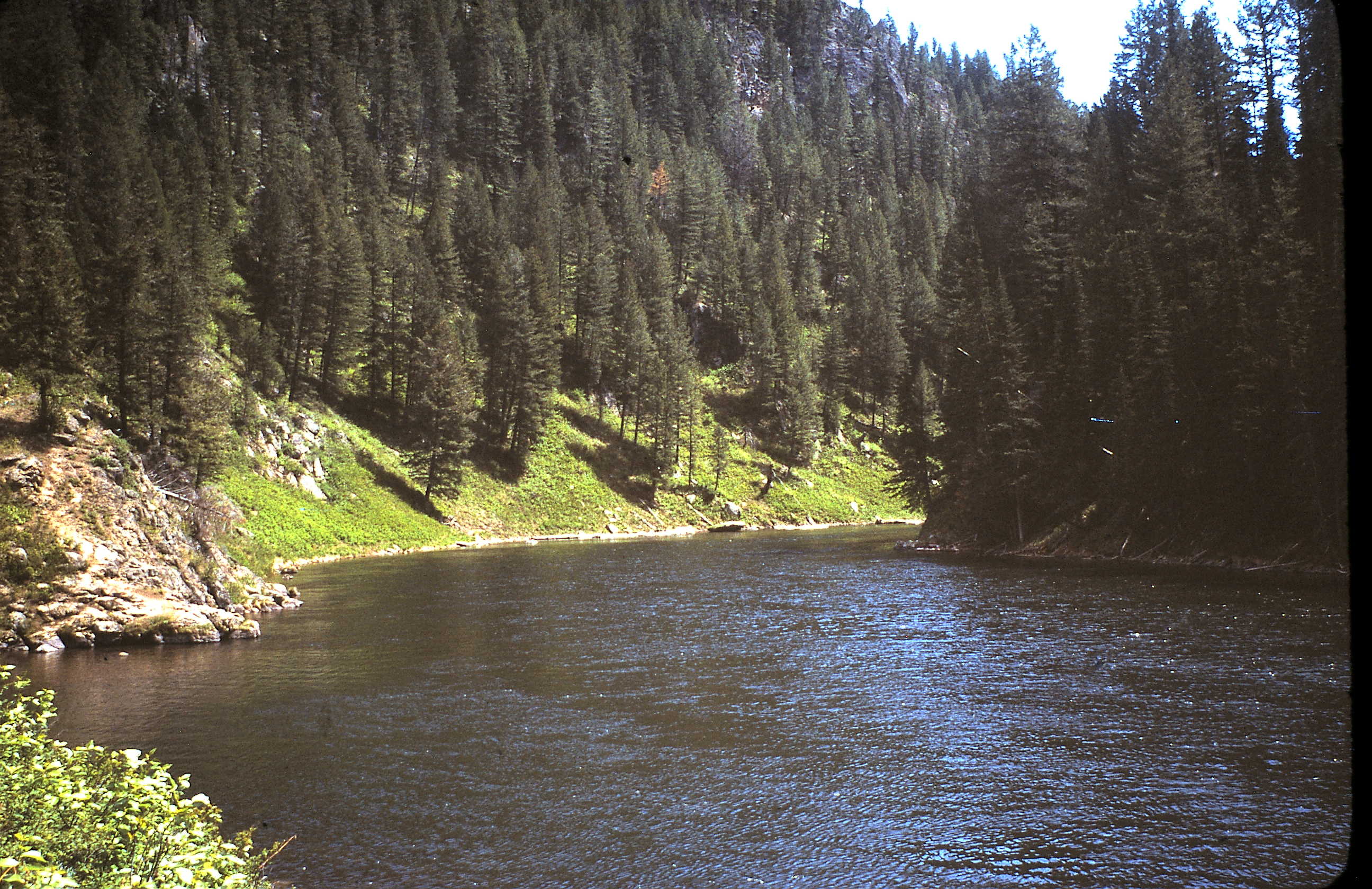Henry’s Fork, July 18th, 2023
With the warming weather and bright skies up and down the river, it is time for terrestrial insects to become an important food form for trout.. That means long, drag free drifts in front of well vegetated banks and dry structure such as snags, rocks and logs. Have hopper, ant, beetle, and even crane fly patterns on hand.
A productive trick follows: I swat any horsefly that lands on my self, then toss the splatted results into the water to drift downstream. On hearing or seeing a trout rise to take it, I have located another fish to try. Do the same with hoppers or any other resident terrestrial insect to locate a feeding fish. You might be accused by your fishing partners of low grade chumming, but the act is legal and informative!

Henry’s Fork at Bear Gulch
Water quality information from Dr. Rob Van Kirk’s Henry’s Fork drainage water status report filed yesterday.
The big (positive) story continues to be how well water quality is holding up so far this summer, despite high outflow from Island Park Reservoir and warm weather. Water temperatures have stayed near average and well below last year’s readings at most locations. Daily maximum water temperatures exceeded 70 degrees yesterday at Buffalo River, Pinehaven, at St. Anthony and Parker. However, both duration and magnitude of high water temperatures are lower than at this time last year. For example, water temperature exceeded 70 degrees at Pinehaven yesterday for a little under 6 hours yesterday, compared with 7.5 hours on July 16 2022. Maximum water temperature yesterday was 71.8 degrees F at our sonde, compared with 72.9 degrees last July 16.
Turbidity is well below average at all locations except Flat Rock, where relatively high outflow from Henry’s Lake has kept turbidity a fraction of a turbidity unit above average.
Timing of aquatic insect hatches is still 5–6 days later than average in the river reach between Island Park Dam and Pinehaven, 8 days later in the Warm River to Ashton reach, and 4 days later than average between Ashton Dam and St. Anthony. At this point, I do not expect much change with respect to average.
Rob Van Kirk, Ph.D.
Senior Scientist
P.O. Box 550
Ashton, ID 83420
208-881-3407 CELL
